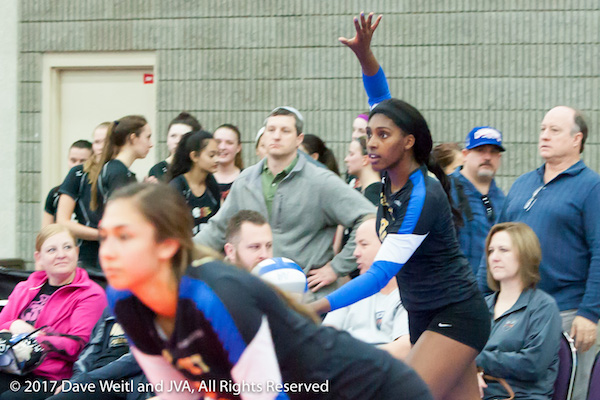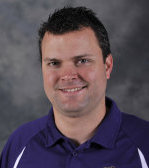Just 10 years ago, college coaches were watching the top recruits in the country during their sophomore year. The players spent their junior year visiting campuses, attending college camps and looking for the best fit. That calendar, at least for the top and mid-major tier student athletes, has all but disappeared.
As colleges get more competitive and more money is poured into the sport at many of the top universities in the country, the recruiting timeline has sped up. Division I college coaches evaluating 8th graders has become a regularity on the top courts at AAU and USAV Nationals. Freshmen in high school are now being evaluated the way juniors used to be. And, some Power Five and mid-major programs have already completed their 2019 and 2020 recruiting classes.
This progression has trickled down to the mid major DI programs, DII, DIII, NAIA and Junior Colleges Programs, so all are affected.
The shift in the recruiting timeline has had some unfavorable effects on the junior volleyball club directors, coaches and players.
Below are some of the main concerns:
Athletes focus less on improving their game
Kids need time to concentrate on learning good fundamental skills, develop their volleyball IQ and learn to be good teammates. We risk losing this valuable stage in their development as their focus is turned to “putting a good skills video together”, or going to tournaments where they will be “seen.” Eighth and ninth grade parents are talking about “recruiting opportunities” instead of skill training and classroom management. Players who have just started high school are being asked to think about what they want to study in college.
More weight is placed on playing time rather than development and hard work to earn a spot on the court
Parents of eighth, ninth, and tenth graders are getting more easily frustrated if their daughters aren’t in the match when a college coach wanders by their court (never mind that she was taken off after three consecutive errors and then yelling at her teammates, her dream school was watching). Everyone that plays or pays for their child to compete on a national level team, no matter what they say, EXPECTS a scholarship; so, every situation is scrutinized and the “process” of becoming great is thrown out the window. Sadly, the character education of the players is also apt to be ignored. Lip service is given to the importance of the athletes learning valuable life lessons as many parents take the attitude of “we’ll fix the attitude problem later, she needs to be on the court now because School X is watching.”
Increased cost of participation and loss of outside activities
Club volleyball is getting more expensive, because parents are clamoring to fly to large tournaments across the country. Not only are these large tournaments expensive with travel costs but they also take kids out of school more often and take full weekends away from opportunities at home. This crowds out young multi-sport athletes who maybe haven’t developed enough or are still figuring things out, but who have reasonable parents who want their kids to, you know, be kids! Good clubs, however, are put in no-win situations as a schedule that is deemed to be less demanding or provide less opportunity for their daughters to be seen (even as young as 8th grade), will lead to players and families leaving.
Players are losing their love for the game
Kids no longer have time to “just play for the love of the game;” they are playing to get a scholarship. How many club and college coaches could tell the story of players who flame out as freshman and sophomores in college, or as seniors in high school? A big part of this, we believe, is a result of the push for “what’s next.” Players are being told by parents and friends to be thinking about what they want to do and where they want to go to college, and they forget about enjoying today for the sake of today.
_____________________________________
The shift in the recruiting timeline has many unfavorable effects on college coaches as well. College coaches are more or less forced to recruit at younger and younger ages, which extends their recruiting calendar, spreads them thinner, makes them push boundaries that are both ethically and legislatively questionable, and most importantly hurts their families and overall quality of life.
It’s easy to say, “well just don’t participate in the early recruiting,” but that’s a lot easier said than done. Wins and losses dictate the livelihood of coaches and their families, and having the best players goes a long way to dictating wins and losses. If everyone else is recruiting early, missing out on the top student-athletes because you think early recruiting is less than ideal could cost a coach a job.
So, many college coaches are leaving the profession due to burnout or to seek a better work-personal life balance.
From our perspective, the goal is not to turn back the clock to the way things were 15 or 20 years ago, but rather to have a discussion about what is best for the student athletes (so they can be KIDS) and what will help college coaches (so they can have quality family time in addition to their career).
The great news is that this discussion is happening among both club coaches and college coaches. It is a regular topic in hallways and meeting rooms at the AVCA convention, and many college coaches are as interested in finding a solution as club coaches are. The better news is that a few other NCAA sports have already taken the lead in adjusting their recruiting calendars to see if this will better benefit the kids and the coaches.
Some suggestions that have been discussed:
1. Remove all methods of contact until January 1st of a player’s sophomore year.
Can we all just say it: Contacting 8th graders is ridiculous? I had a coach ask me last summer what an 8th grader was thinking about studying, to which I responded, “9th grade English”. 8th and 9th graders aren’t ready to select a major. Moving the contact window (this includes communicating through a club coach) would give the players time to develop their skills and play without looking over their shoulder at tournaments to see who’s watching. Then parents can relax and enjoy the game as well. This recommendation would include all communication, including communication from a college coach through the club to the athletes, on-campus visits (other than camps) in which the players meet with coaches, and phone calls initiated by the player (college coaches would just have to ask for the athlete’s grade, then politely hang up).
2. Then, once the timeline is pushed back, remove restrictions on contact; let the coaches speak to the kids
If the contact timeline is pushed to January 1 of the sophomore year, college coaches should be allowed to contact the families directly, without having to go through the club. This would get rid of the practice of college coaches sending fake emails to coaches, directors, and recruiting coordinators that are written to the prospective student athlete. All the current NCAA legislation does is add to the steps needed for the college coach to get in touch with the student athlete; it does not prevent any of it. Let the college coaches text, call, write, and email directly.
3. Ban any scholarship offer from being made to a PSA before the contact period begins.
Enforce this rule heavily, with serious penalties for those who do not follow it. A direct offer or implied offer to the player or the player’s club/high school coach would not be allowed. College coaches who break this rule would be penalized by losing a scholarship during the same year as that player enters college (i.e., if you can’t offer a 2021 athlete and you do, then you lose a scholarship in 2021). Obviously, the enforcement of this may prove difficult, but that doesn’t mean it’s not worth doing.
4. Shorten the recruiting window by starting the calendar on February 1st.
This would give college coaches would have family time through December and January. Clubs would have time to train and compete without the pressure of “who’s watching.” It would be difficult to change the year-end national tournament schedules due to the school calendars nationwide.
The May quiet period would give the college coaches a break and again, time for teams to train and compete, preparing for the national championships. Colleges would still have July as a recruiting opportunity during camps. This makes the recruiting window six months long (Feb. – July), with a month break during that six months.
On the club side, the season for National teams would be shortened, which would be a welcomed change for most clubs. As it stands now, teams compete for six or seven months, which is longer than an NFL season, the NBA regular season, NHL regular season, and college volleyball seasons. If NBA players cannot stay focused for six months; how on earth do we expect high school kids to stay invested for six months of competition and another two months of training?
_____________________________________
As with all rule changes, there would be some that would try to find loopholes around them or break them altogether. But that is already happening, and we believe the benefits of making changes far outweigh the challenges.
Let’s work together to find a resolution that is best for the junior volleyball community. Ultimately, we believe that by implementing some changes the quality of life for college coaches will improve, and high school athletes will be able to enjoy being kids, as well as sustain their love for the game. With the partnership of the AVCA and JVA, people are having real conversations about real solutions.
Please take a few minutes to complete this survey and share your feedback.
The purpose of this survey is to gather some concrete feedback on a broad scale about the current and potential state of recruiting in the college game. By providing your point of view, we can have more data and more opportunity for improvement.
For related reading on the volleyball recruiting process click here. For more education and information for volleyball players click here. To learn more about the JVA click here.
About the Author
John Brannon is entering his fifth season as the Club Director of Carolina Union Volleyball Club in Charlotte, North Carolina, and has been a member of the JVA since 2011. Under his guidance, CUVC has opened it’s own training facility with a State-of-the-Art Orthopedic Subfloor and has grown from 12 teams to 24 teams in just three years.













